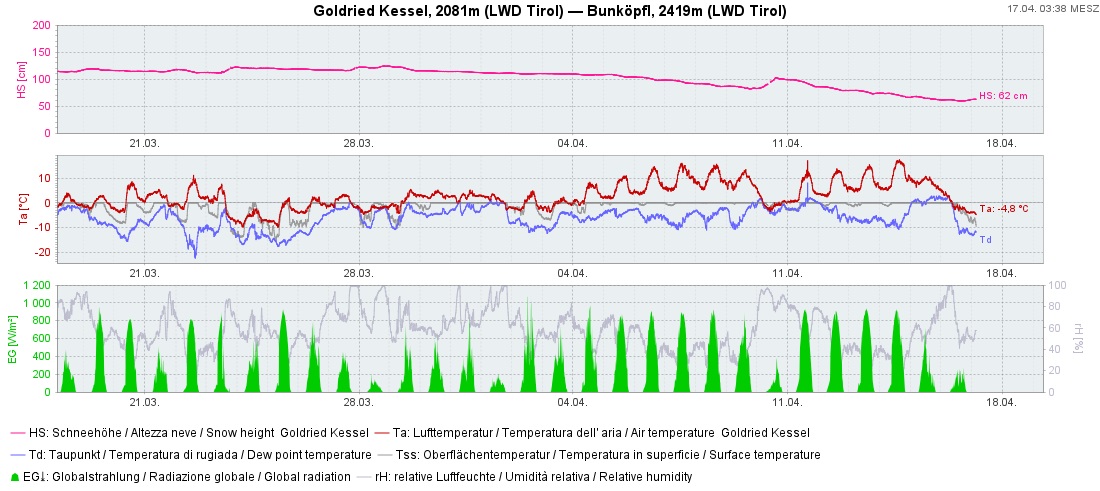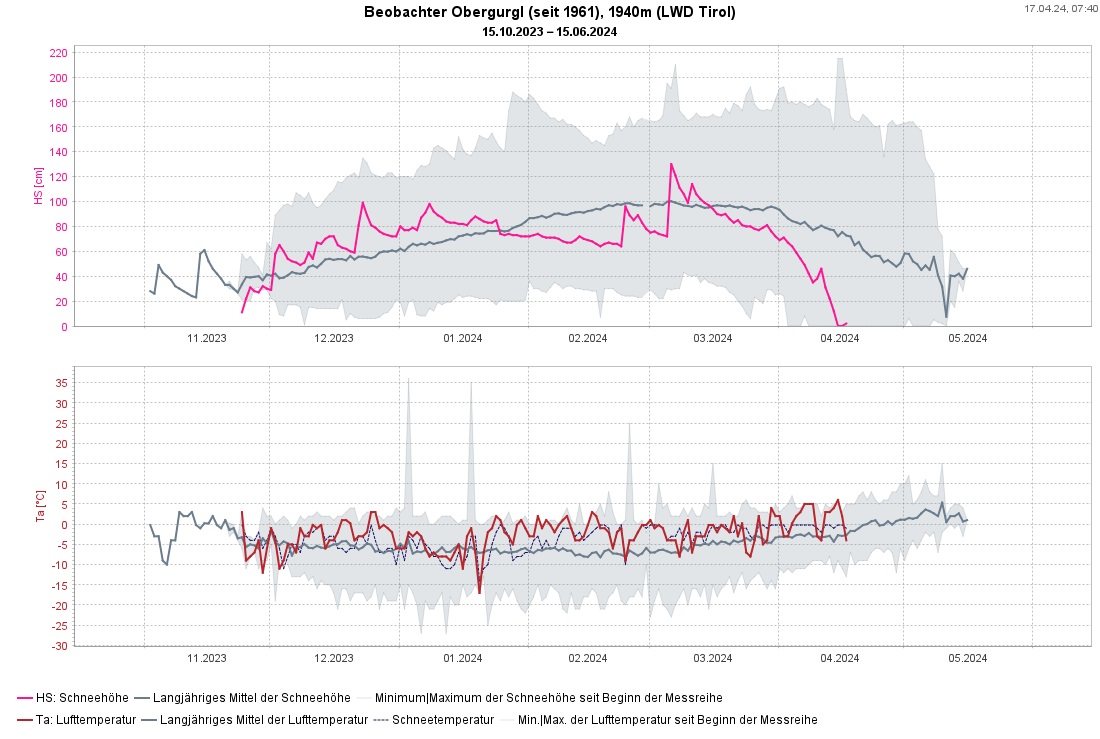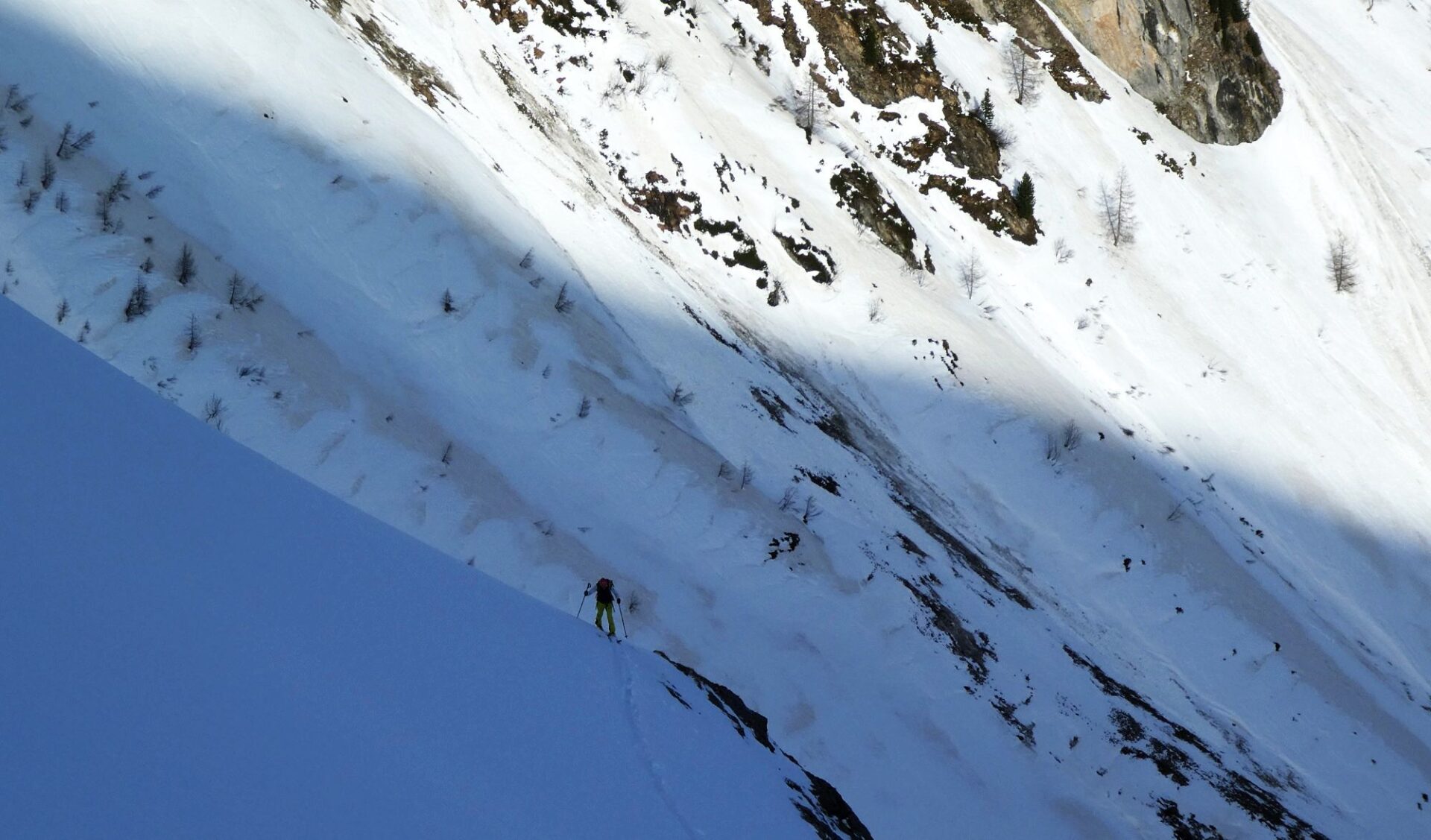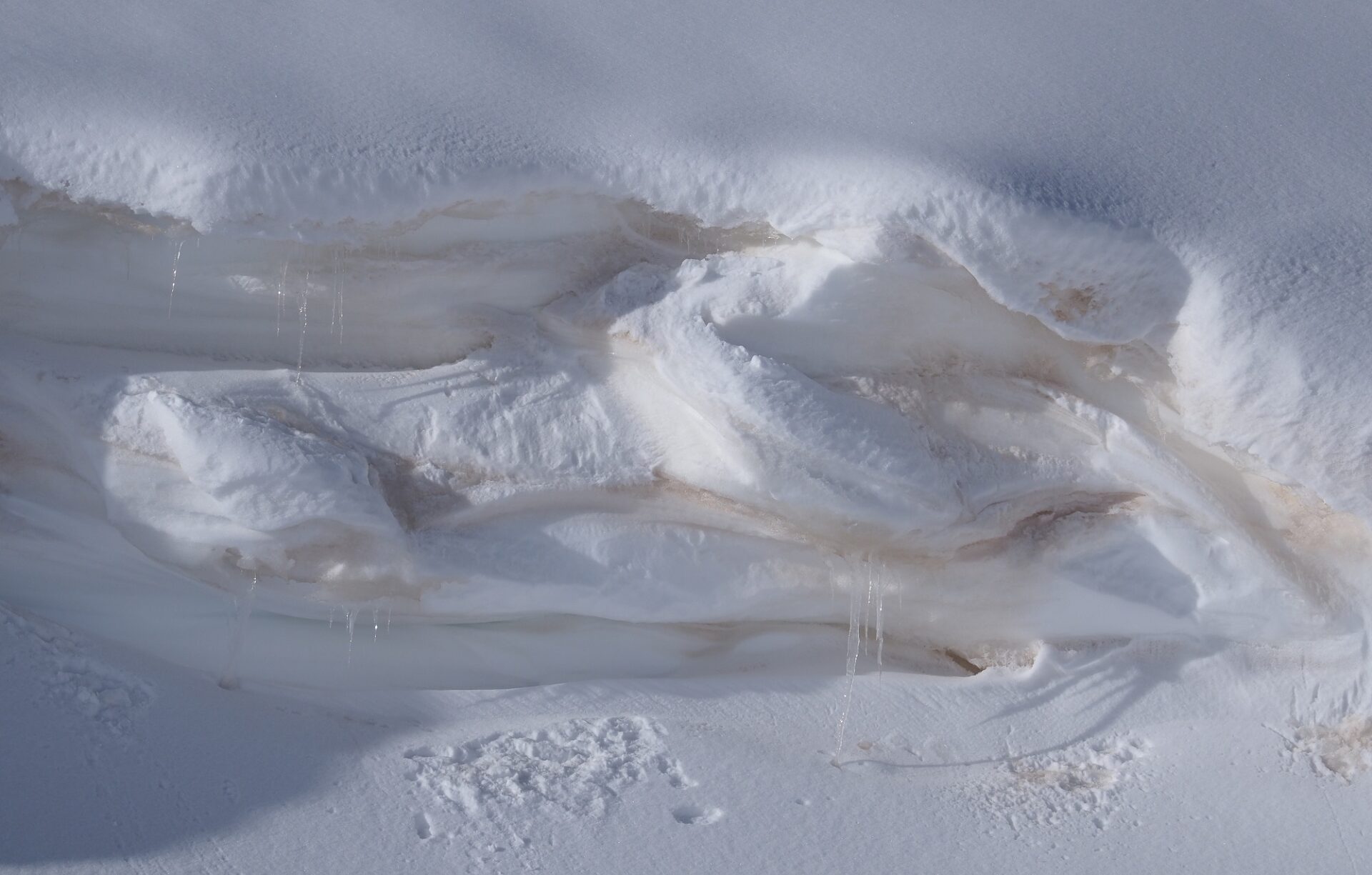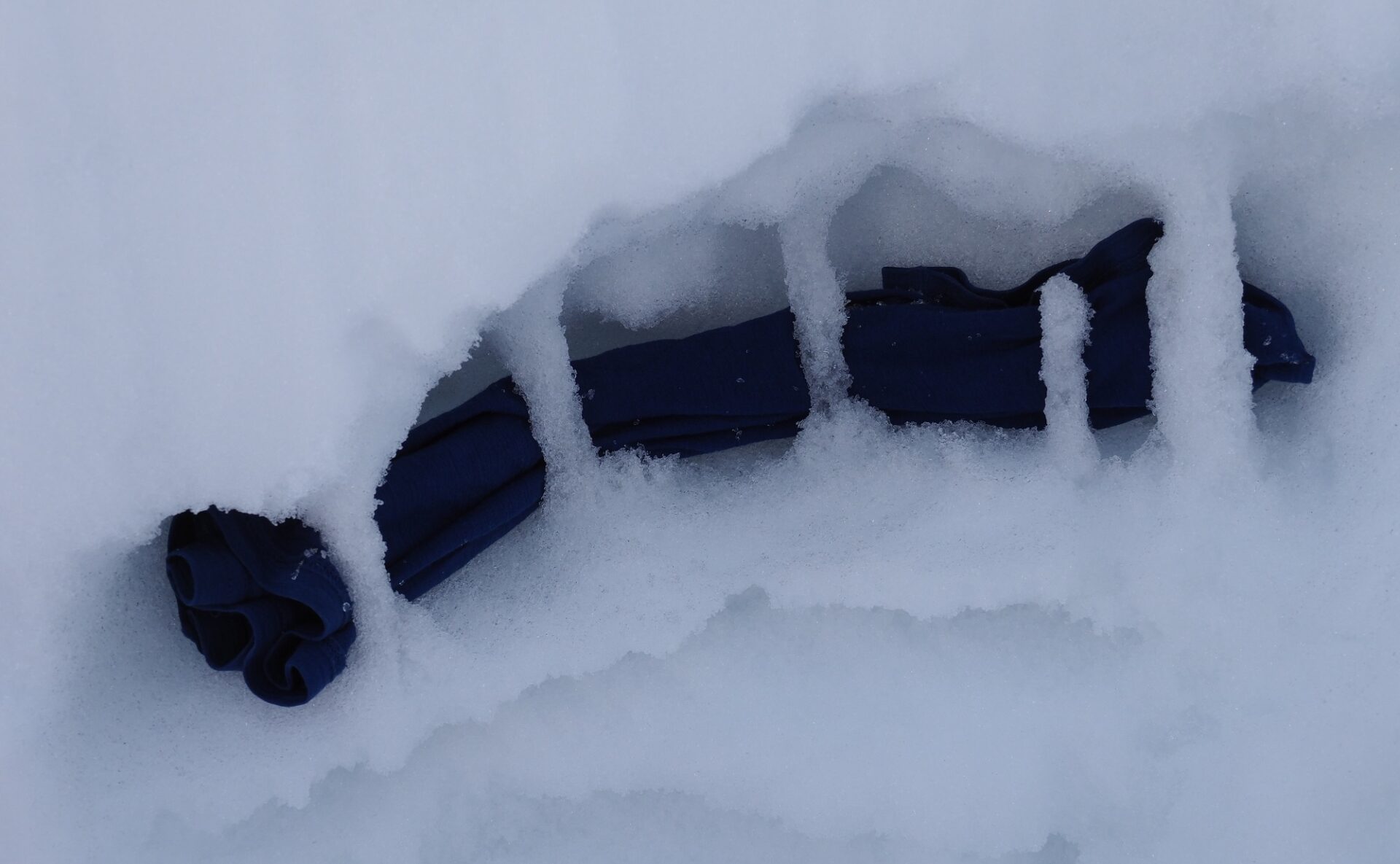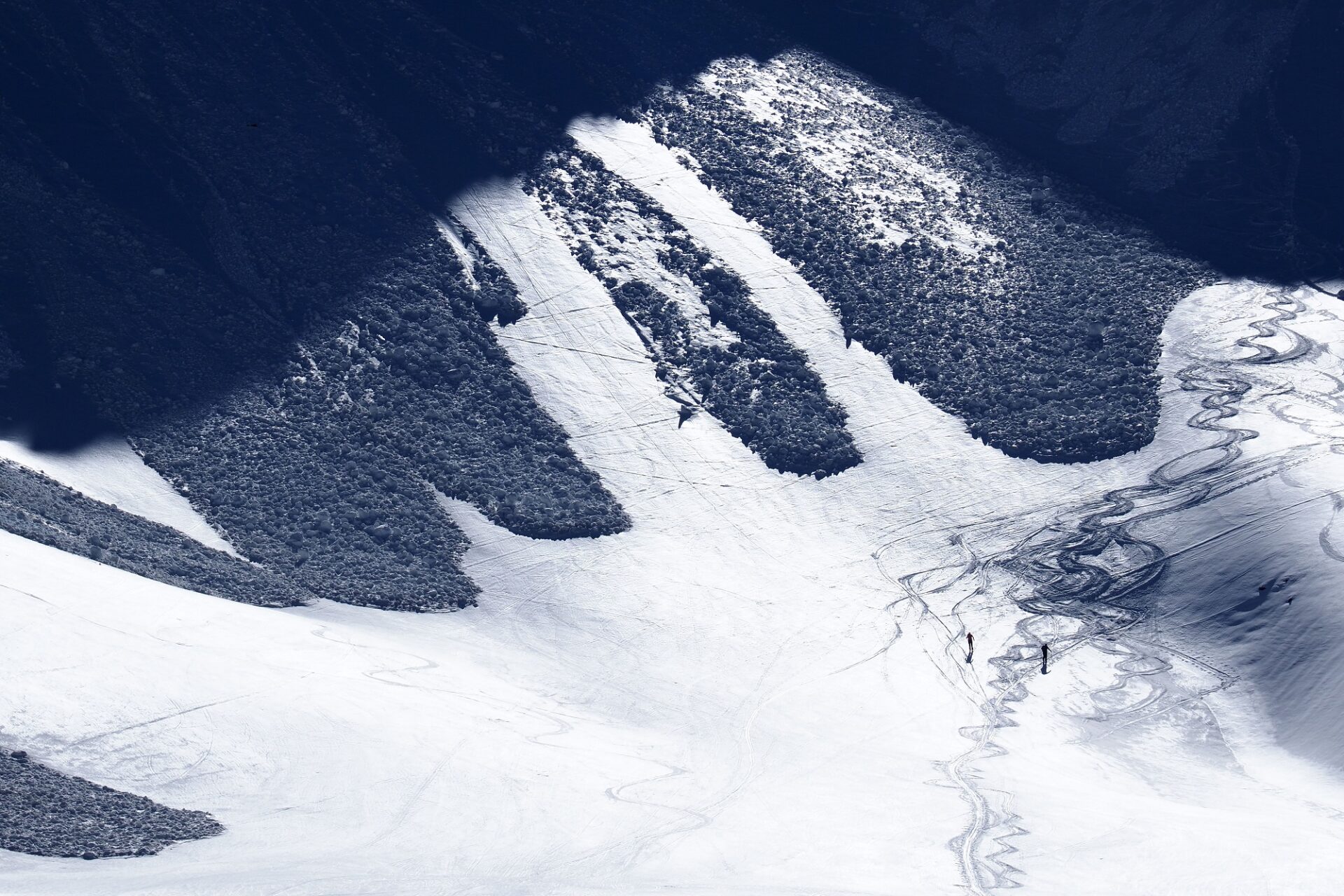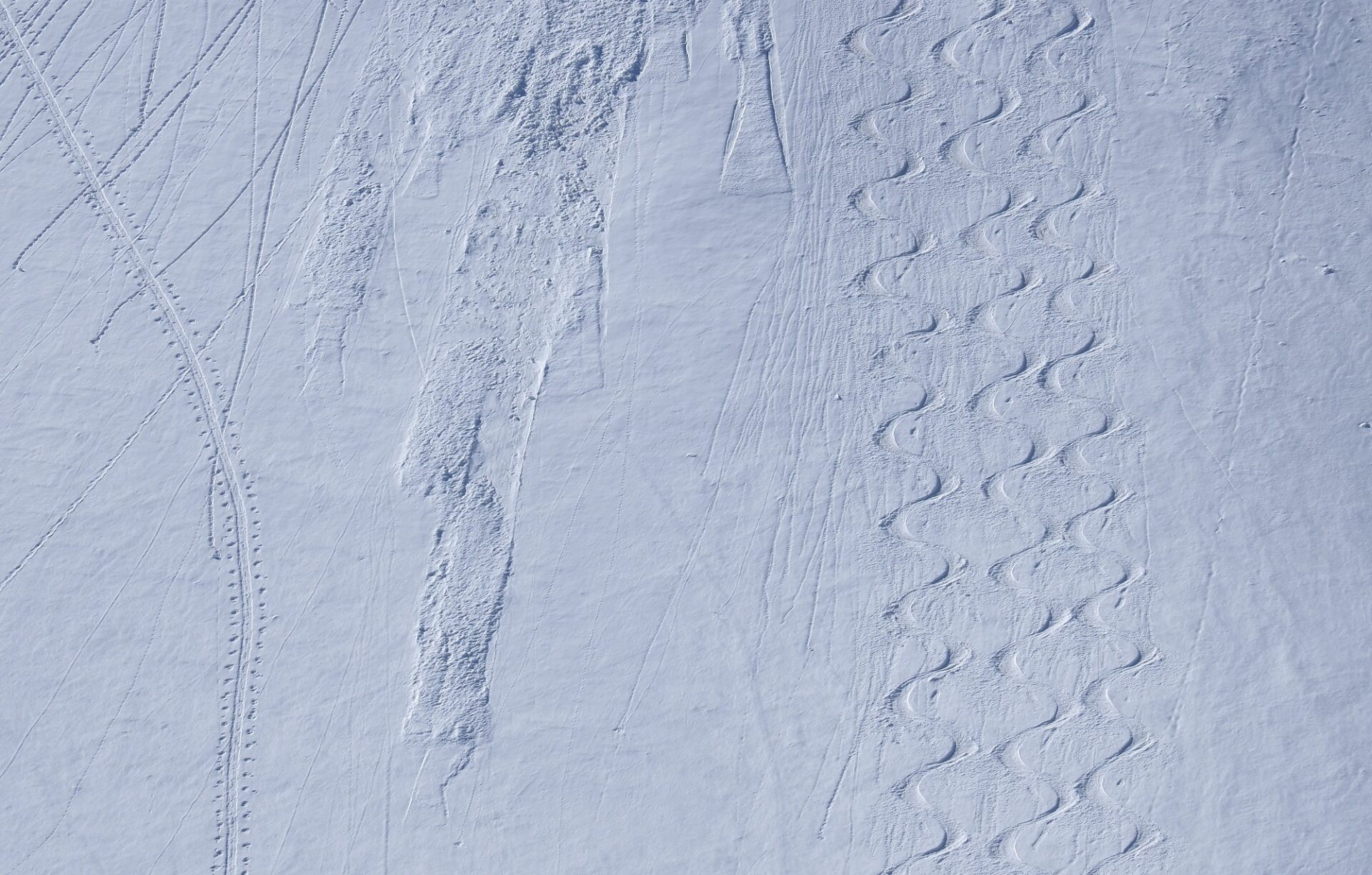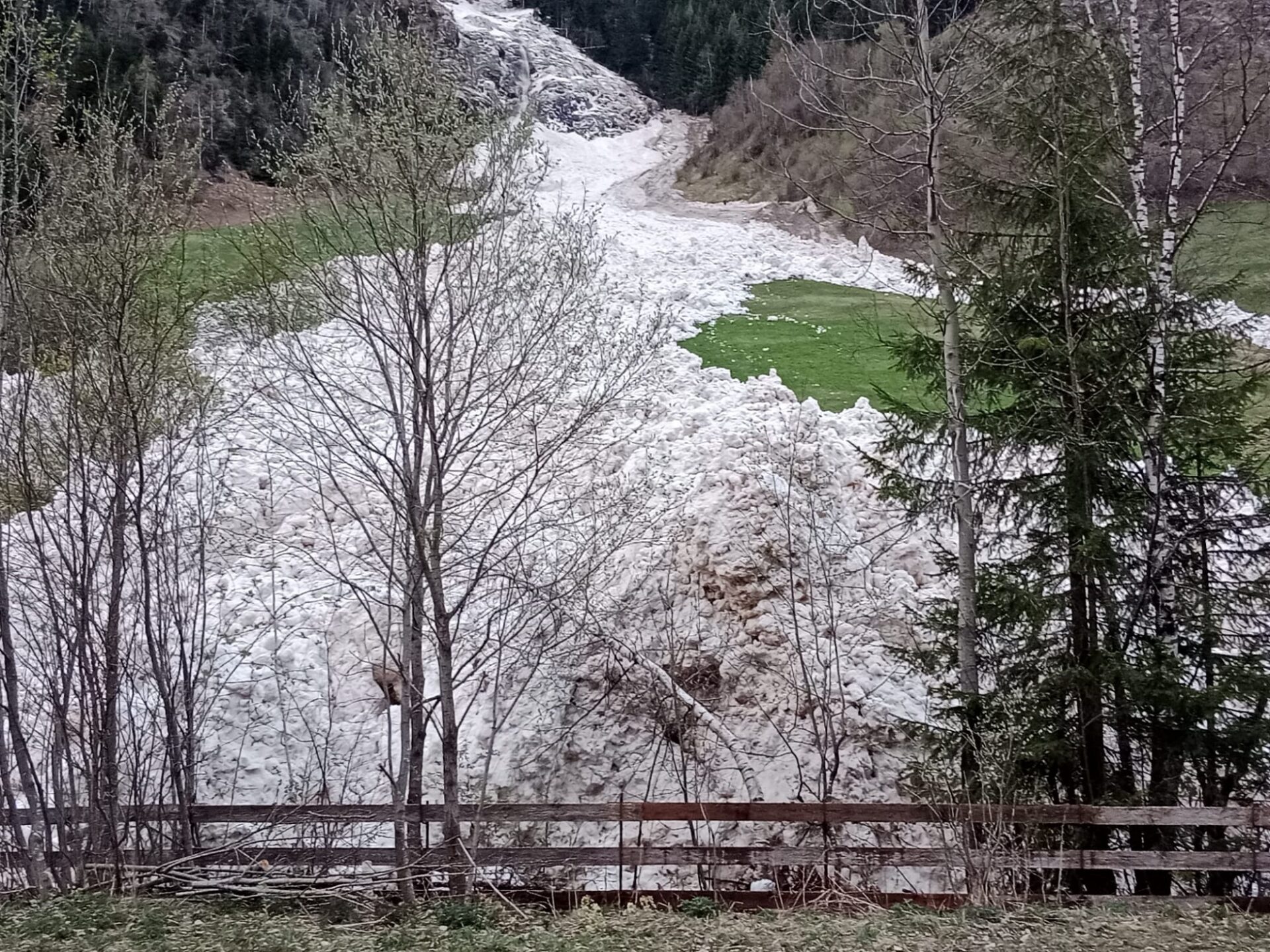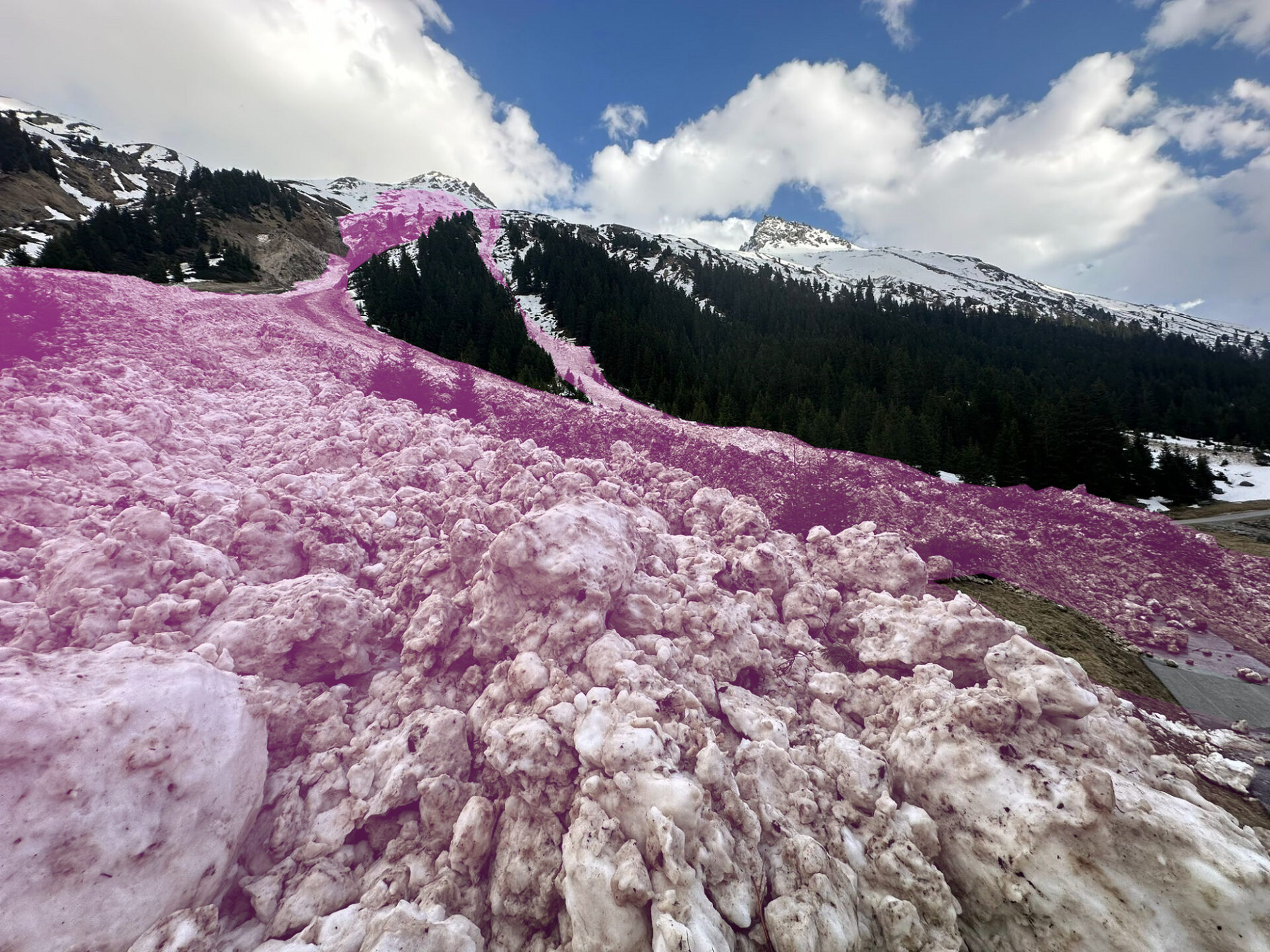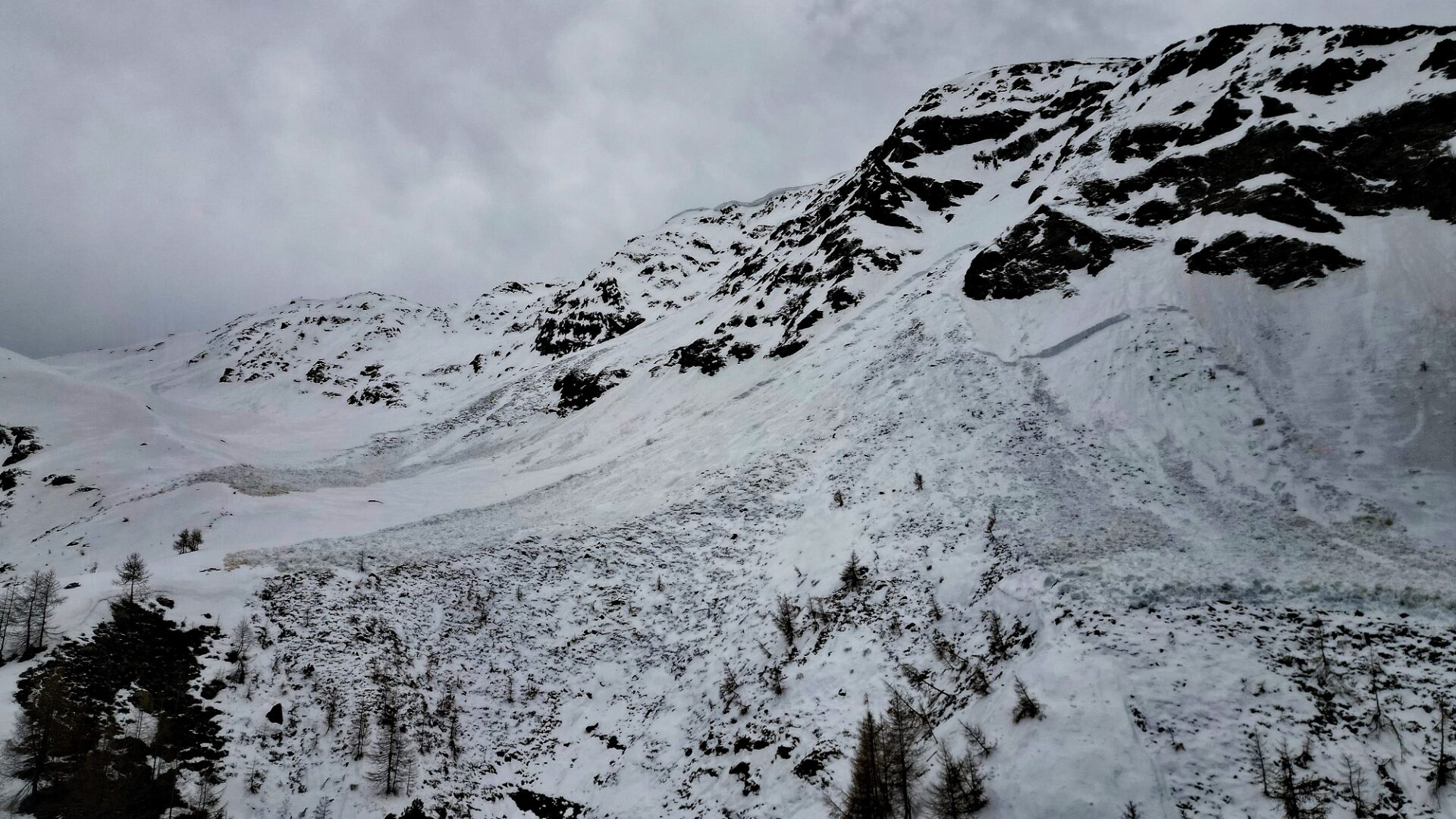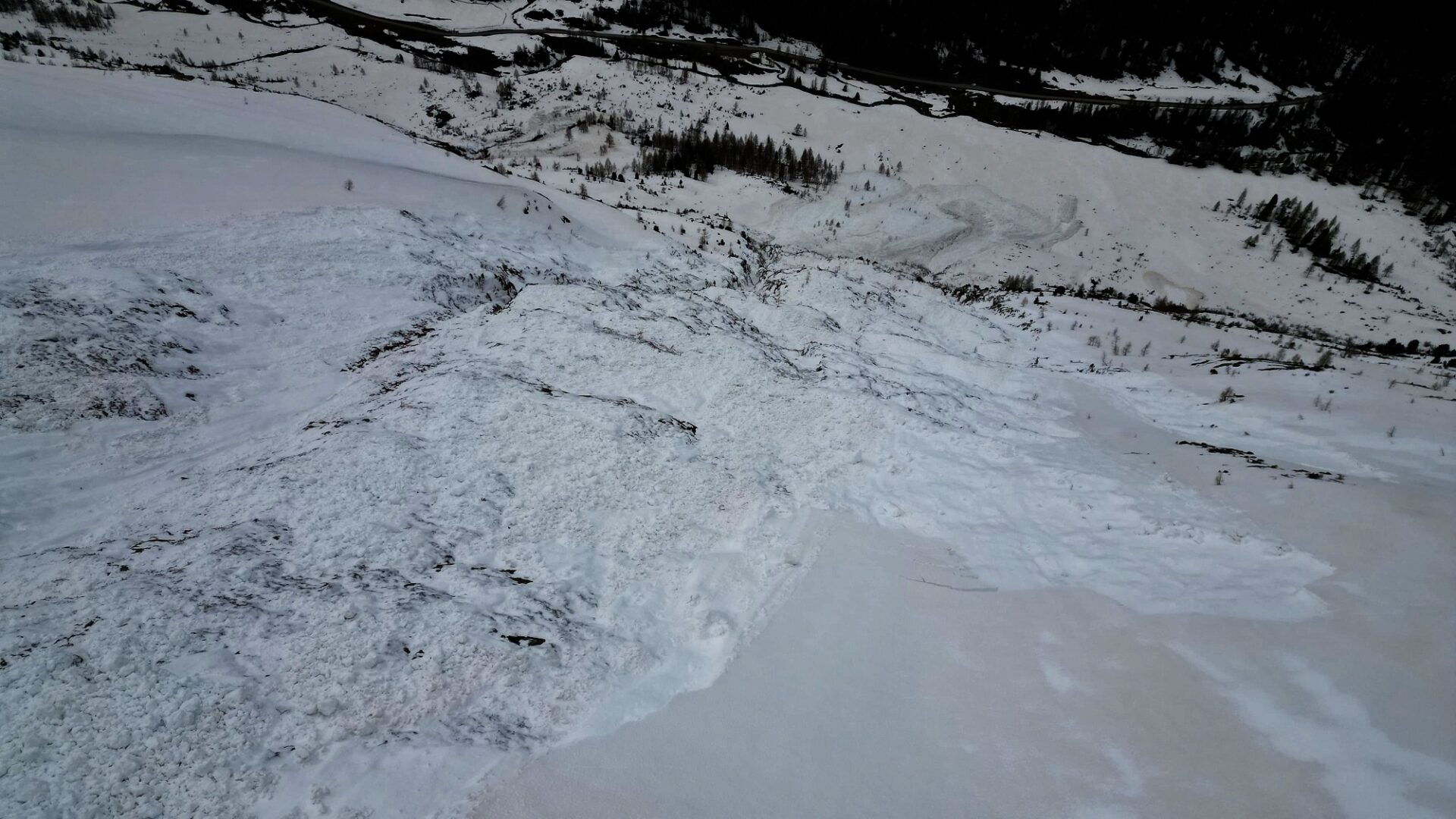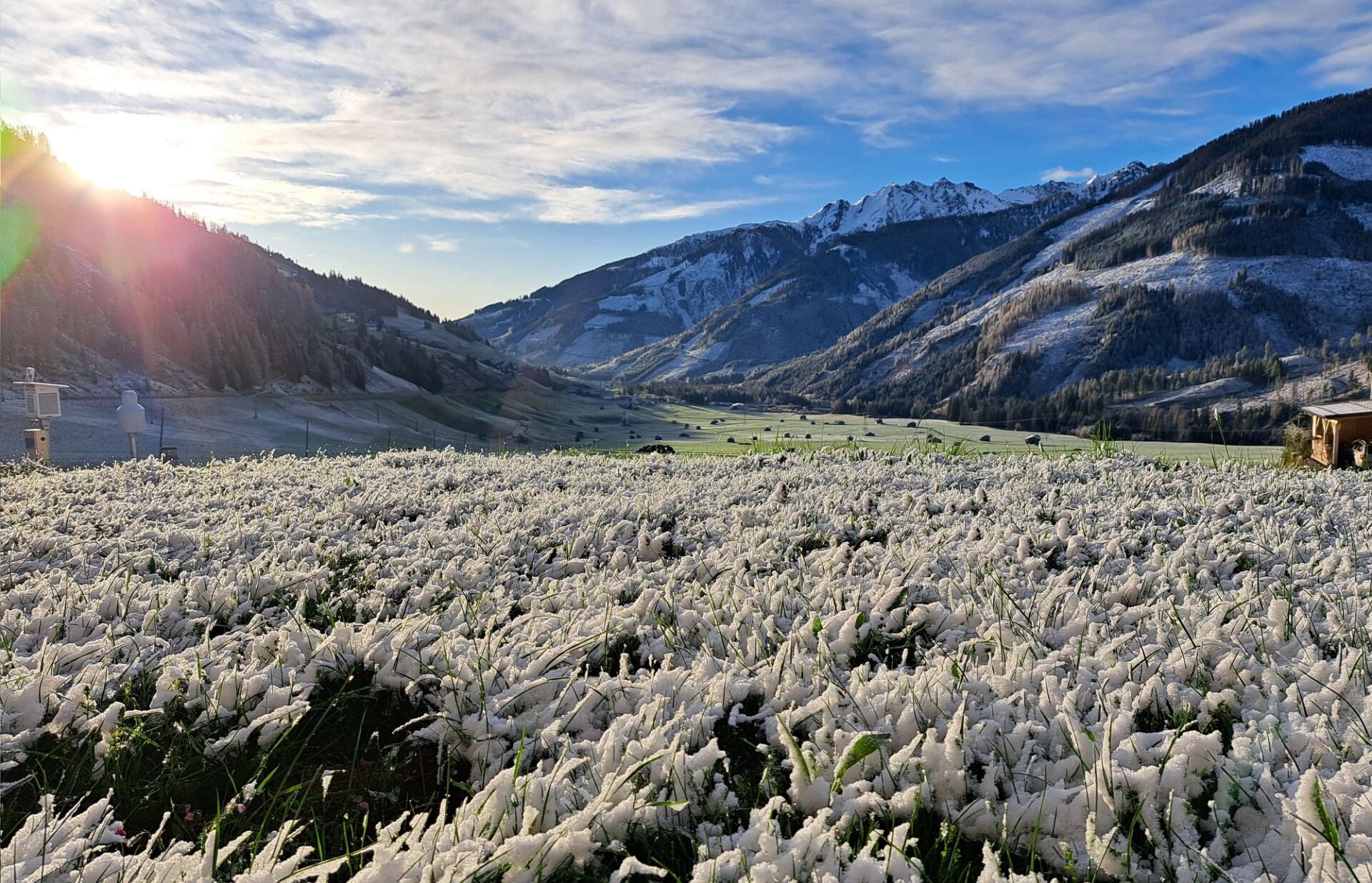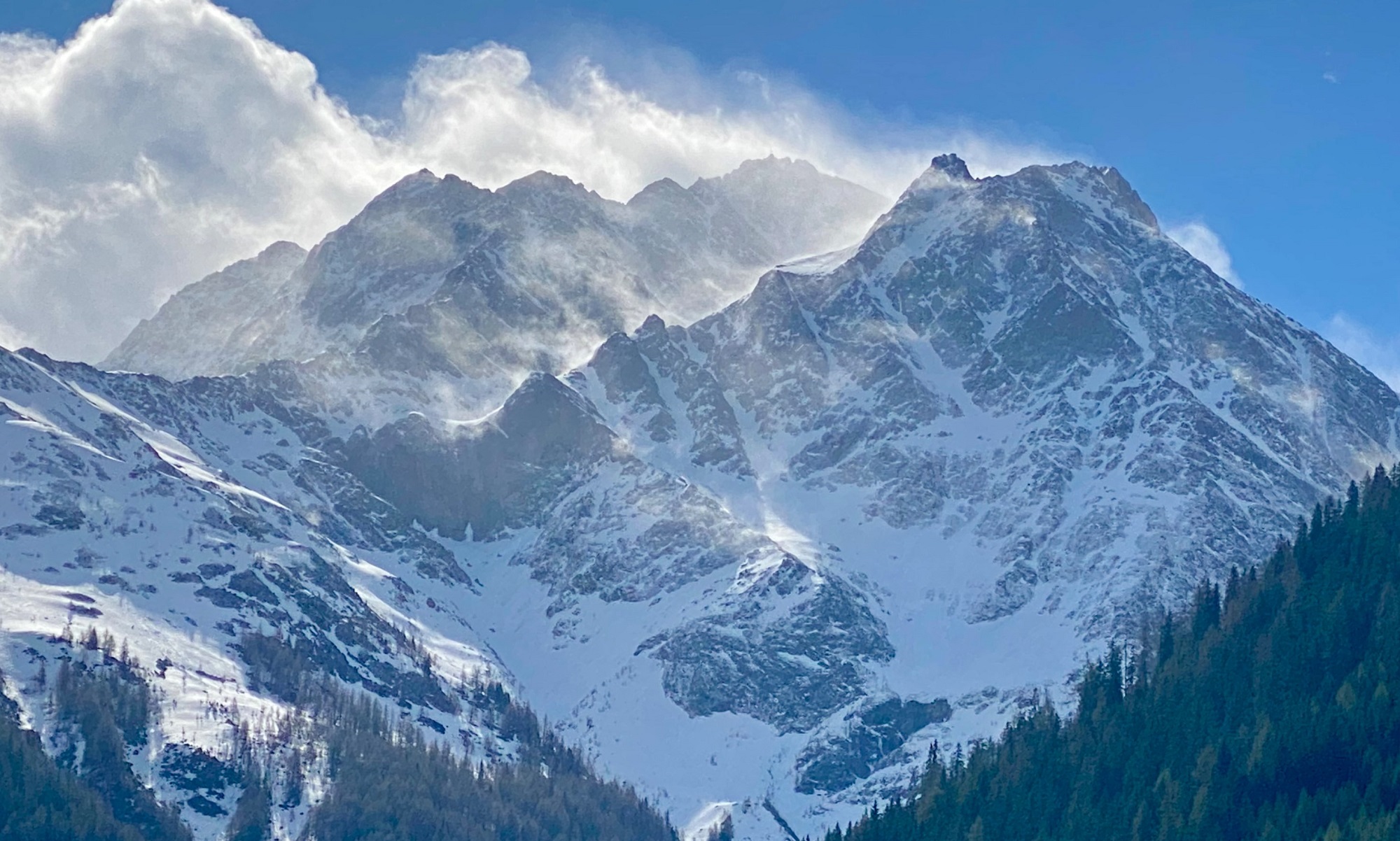Low temperatures, fresh snow and wind are the ingredients of current avalanche danger. Particularly in gullies, bowls and behind discontinuities in the terrain, the freshly-generated trigger-prone snowdrift accumulations are often hard to recognize due to poor visibility. Especially in areas where fresh snow has been heavy, such avalanche prone locations are frequent and far-reaching. Releases can grow to medium size. The gliding snow problem dropped into the background when temperatures descended, nonetheless such natural triggerings are still possible.
Wintery weather brings back wintery avalanche danger
Powerful fronts delivering additional northern barrier cloud systems
Since temperatures dropped significantly on Monday night, the snowfall level has been 1000 m and lower and snowfall followed on its heels. Most of it was registered in western and northern regions, inneralpine zones had less than anticipated.
Winds were often above transport speed, thus generated fresh snowdrift accumulations. At the same time, the wet and weakened snowpacks we had last weekend were able to consolidate again. Often up to high alpine regions there is currently a thick melt-freeze crust which is capable of bearing loads beneath the fresh snow and drifts .
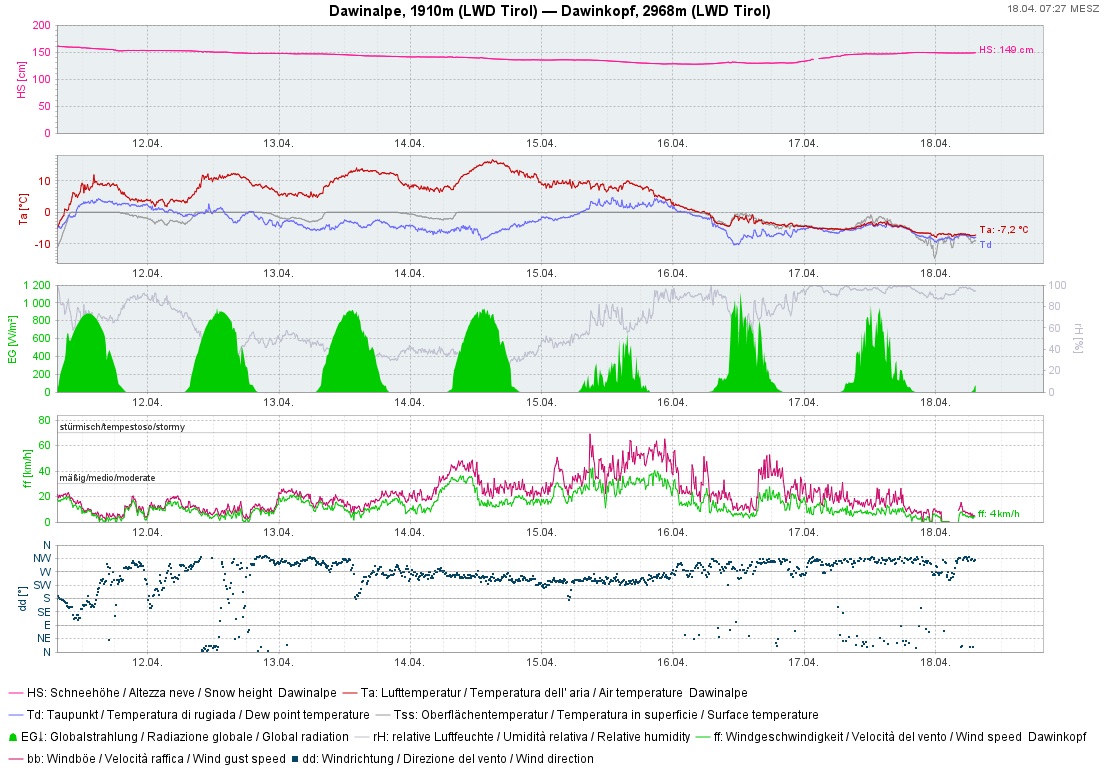
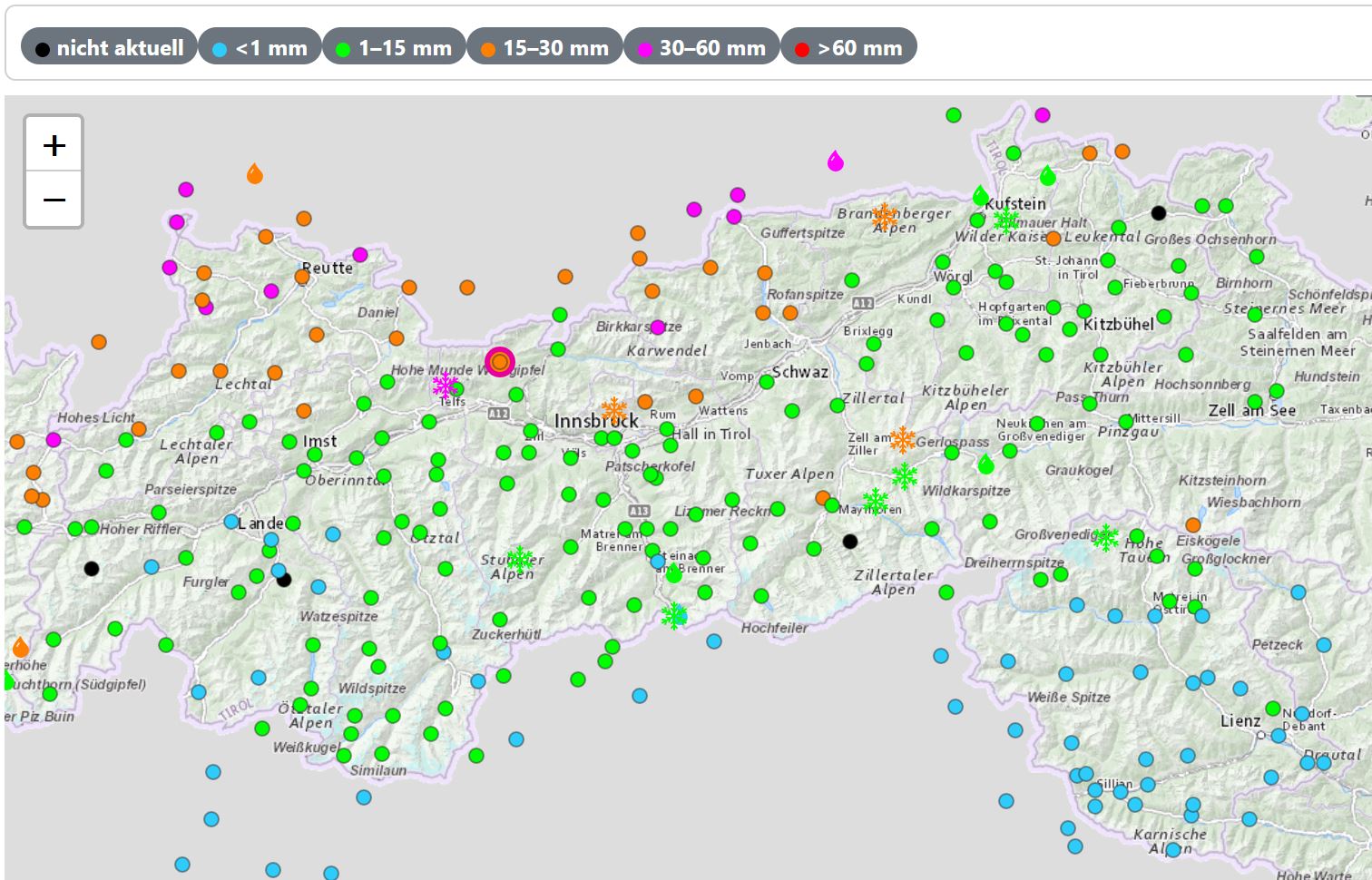
On Friday, 19.04 a further front will reach us from the north. After a dry start to the day, precipitation is expected to set in during afternoon or evening. Persistent, heavy snowfall is anticipated particularly from Arlberg to Karwendel. By Saturday evening, 20-40 cm of fresh snow is expected, in the barrier cloud regions 50 cm is possible. Intensifying winds will transport the fresh snow anew.
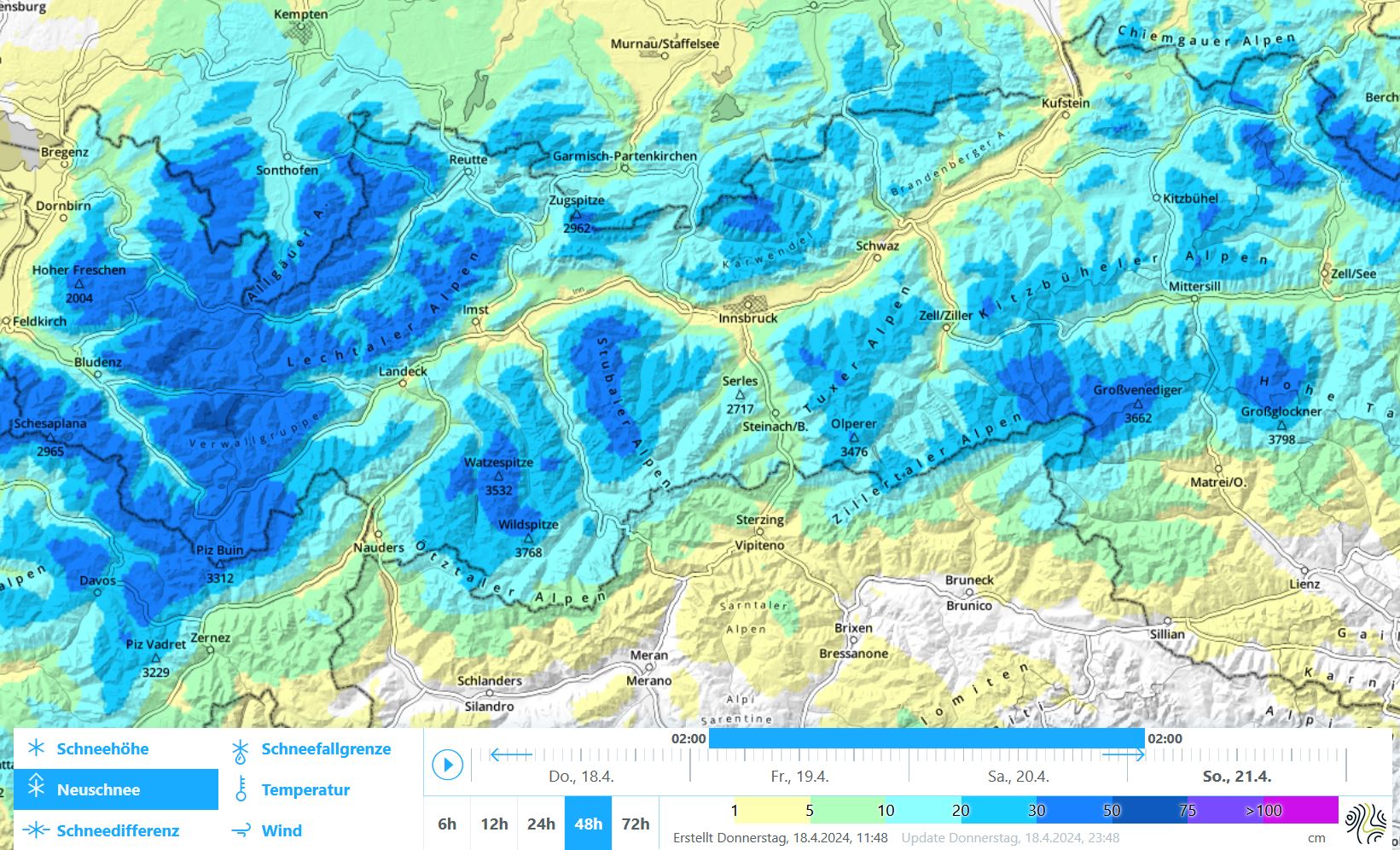
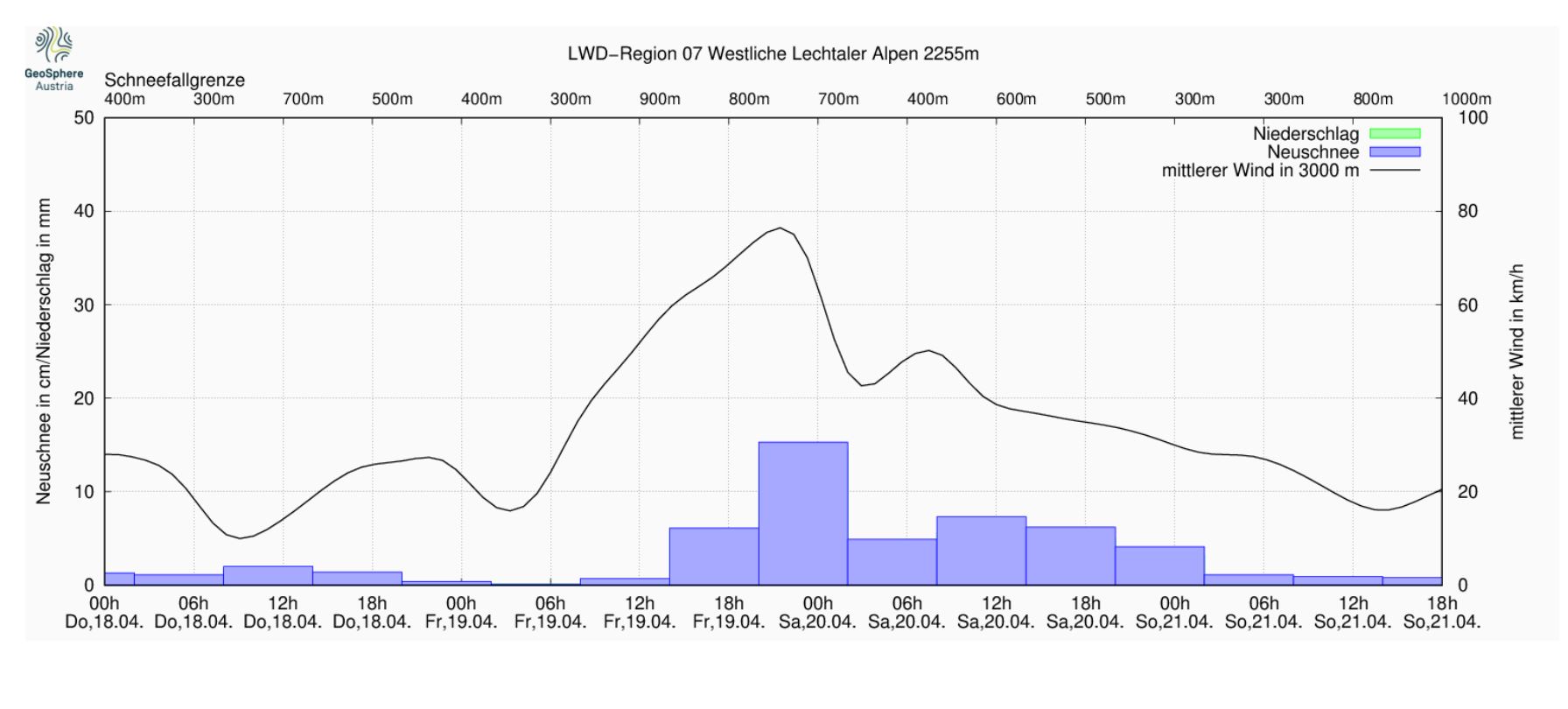
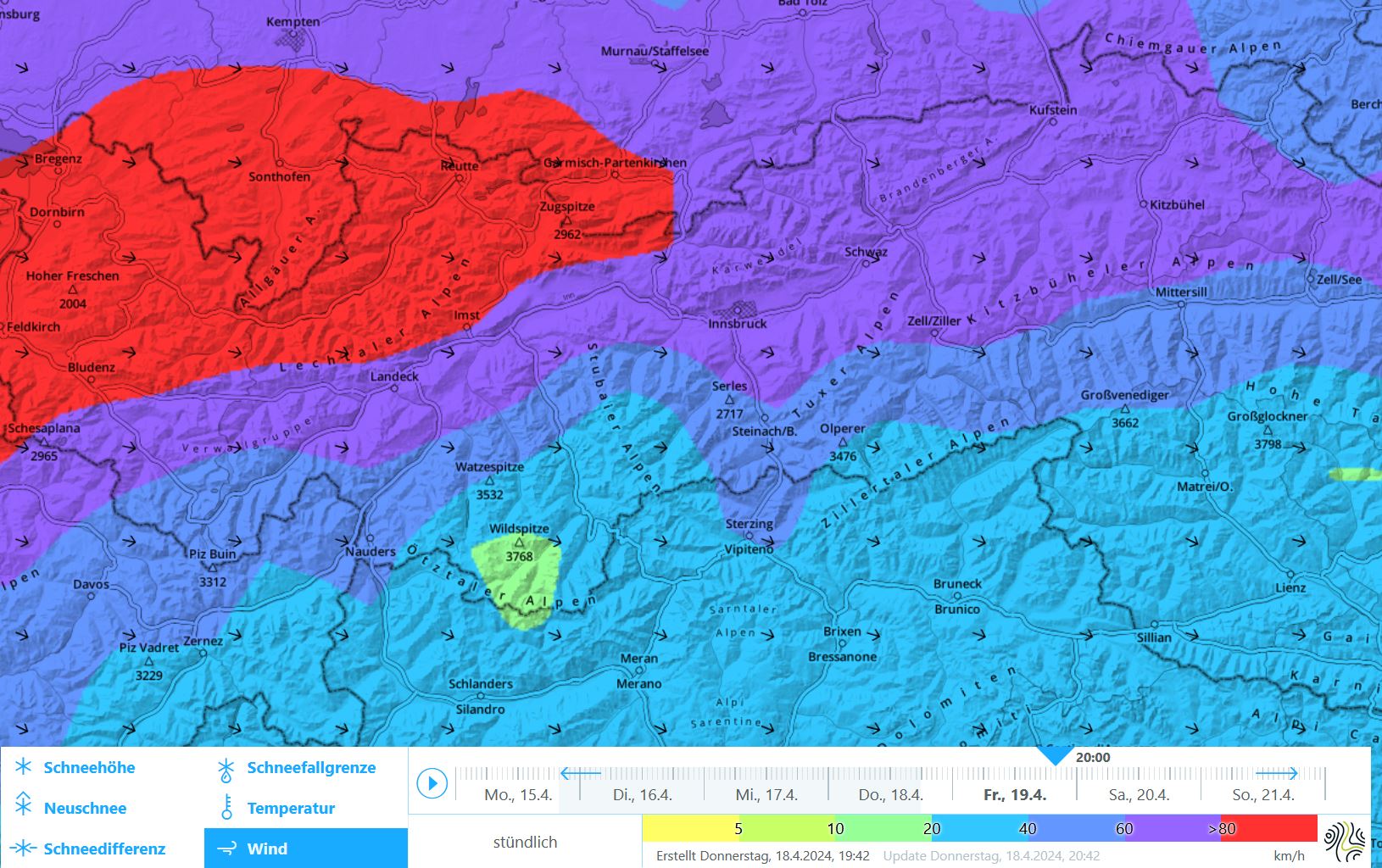
Main danger: freshly generated snowdrift accumulations
The wintery weather is mirrored in the avalanche danger situation. The wet-snow problem which dominated the overall situation until Monday, 15.04, is gone, at least for the moment. The snowpack which was often moist-to-wet down to the ground currently lies beneath a thick crust which will not trigger.
What remains: fresh snowdrift accumulations which have been generated by moderate winds over the last few days and which will grow in frequency and in size starting on Friday afternoon due to heavy snowfall and strong winds. Particularly in the regions with heavy snowfall, Danger Level 3, Considerable, will be reached on Friday evening. Avalanches can grow to medium size and be highly dangerous for winter sports enthusiasts. Potential weak layers: loose fresh snow or graupel. Danger zones occur especially in very steep gullies, bowls and behind discontinuities in the terrain above 2000 m. They will be difficult to recognize due to poor visibility.
Gliding snow activity has receded measurably in the last few days. Isolated avalanches were still reported, however. Even if the danger is no longer as acute and there seems to be far less activity, attentiveness to glide cracks remains imperative in order to avoid the avalanche prone locations.
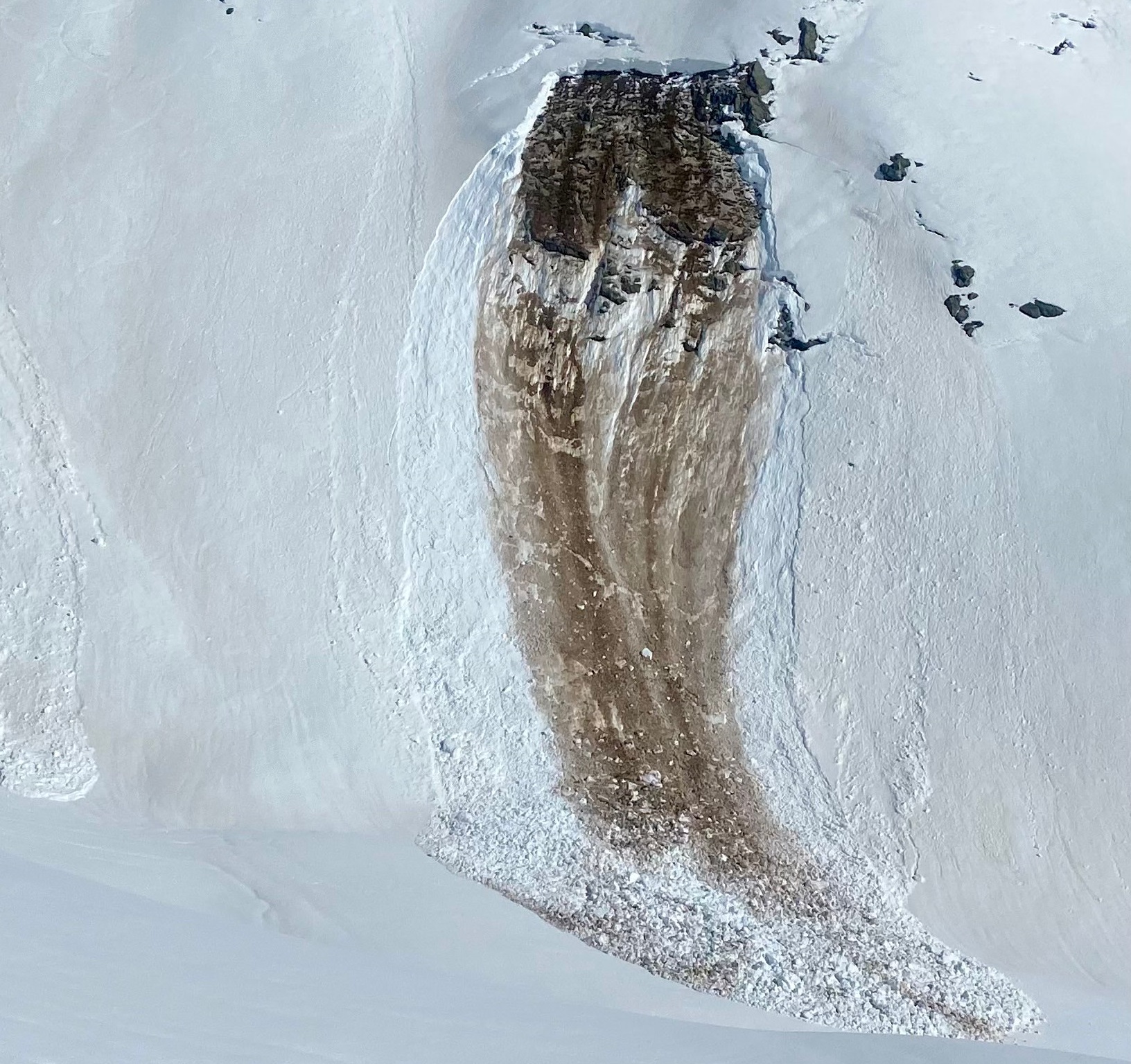
Starting on Sunday: weather slowly improving, still low temperatures
On Sunday, 21.04, the weather will start to improve. Winds will slacken off, clouds may disperse. In case of solar radiation and diffuse light, numerous small-to-medium loose-snow avalanches will trigger naturally in steep rocky terrain. At the same time, the radiation will help the snowdrift accumulations to quickly settle and consolidate, at least on sunny slopes. On very steep shady slopes they will remain prone to triggering for a bit longer.
Next week the weather will continue to improve in the mountains. Sunshine and clouds will alternate, temperatures gradually climb, but it will remain cool.
Pictorial review of last week
